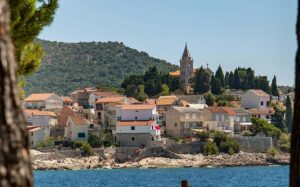
As Serbian Economist reports, the short-term tourist rental market in Croatia from June 2026 will operate under new EU rules, which provide for the complete removal of “gray” rentals from the shadows and strict control over tax revenues.
According to the published explanations, each object rented to tourists (apartments, houses, apartments) will be assigned a unique registration number. It will become a mandatory identifier when placing advertisements on online rental platforms. Placing objects without such a number on services like Airbnb and Booking.com will be prohibited – the absence of the code will automatically mean that the object operates outside the legal framework.
The procedure for obtaining a registration number for owners will be free of charge and, according to the authorities, should simplify control over compliance with the law, as well as reduce the share of unregistered objects rented without paying taxes.
Additionally, part of the control powers will be transferred to the local level: community tourist boards will directly monitor the payment of compulsory tourist tax and will be able to promptly respond to violations by landlords operating illegally or understating real income.
It is expected that the tightening of rules will make the rental market in Croatia more transparent and predictable for tourists, as well as equalize the conditions of competition for legal landlords, while increasing tax revenues to budgets at different levels.
As a consequence, experts predict an increase in the price of vacation in Croatia by 10-12%.
https://t.me/relocationrs/1950
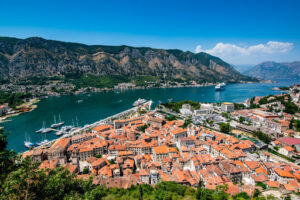
In January-November 2025, the Croatian residential real estate market cemented its status as one of the most expensive and dynamically growing in the EU. Official statistics and private research show double-digit price growth amid a slowdown in the number of transactions and an increased role of the state in addressing the issue of housing affordability.
According to the State Statistics Office (DZS), the average price per square meter of new housing in Croatia in the first half of 2025 was €2,754. This is approximately 15.9% more than in the first half of 2024 and 5.3% higher than in the second half of 2024.
By region. – Zagreb: around €2,958 per square meter (+4.5% year-on-year), rest of Croatia: around €2,511 per square meter, with growth in these cities and towns reaching 22% over the year, reflecting the rapid rise in housing prices in coastal and tourist regions.
The House Price Index shows that in the second quarter of 2025, residential property prices rose by 4.4% compared to the previous quarter and by 13.2% compared to the same period in 2024. According to Eurostat, this is one of the highest figures in the EU in terms of quarterly and annual growth.
According to market analysts’ estimates, the average price of housing (including secondary housing) in the fall of 2025 approached €2,800–2,900 per square meter across the country, which is approximately 70–80% higher than in 2020. At the same time, the average price of apartments is estimated at over €3,800–4,100 per square meter, while houses are slightly cheaper.
Market data shows that the gap between the coast and inland regions is widening:
In Split, the average asking price in October 2025 reached around €5,315 per square meter, almost 15% more than a year earlier.
In Dubrovnik, an apartment costs on average more than €4,100 per square meter, and in prestigious locations, the range is €5,000–7,000 and above.
In Istria and popular locations in Central and Southern Dalmatia, typical prices range from €3,500 to €7,000 per square meter, depending on the class of the property and its proximity to the sea.
Inland regions (e.g., Slavonia) remain significantly cheaper, often in the range of €1,000–2,000 per square meter.
In Zagreb, the average price for apartments is estimated at around €3,400–3,500 per square meter, but there is a significant gap between districts within the city. Analysis of private listings shows that the central and “tram” areas of the capital are significantly more expensive than the suburbs.
A separate trend in 2025 is stagnation and even a slight decline in house prices in some segments. According to one of the largest ad portals, the average price of houses in Zagreb in the middle of the year was around €1,200 per square meter, with price growth slowing more sharply than for apartments.
Despite high prices, the market has not yet shown a full correction. Some analytical reviews note a decline in the number of transactions in the first half of 2025, but this has had virtually no impact on price levels, especially in coastal regions, where supply remains limited.
At the same time, rising interest rates and tighter mortgage lending conditions, which began in 2023–2024, are limiting the options for some households, especially young families. In 2025, the Croatian National Bank tightened macroprudential requirements for banks and mortgage loans in an effort to curb overheating in the housing market and risks to financial stability.
According to Arvio’s report for the first quarter of 2025, foreigners accounted for about 7.19% of all real estate transactions in Croatia. The most active buyers were:
citizens of Slovenia – approximately 30.2% of foreign transactions,
Germany – approximately 21.1%,
Austria – approximately 10.4%.
The total number of transactions involving foreigners has been declining for the third consecutive year: an estimated 13,300 in 2022, 12,300 in 2023, and 11,600 in 2024.
Foreigners traditionally concentrate on the Adriatic coast (Istria, Kvarner, Dalmatia) and the islands, where new apartments and houses ready for immediate occupancy or rental are in demand. It is external demand, combined with limited supply, that largely supports the high and rising price level.
The sharp rise in prices and the decline in housing affordability prompted the government to adopt the first comprehensive National Housing Policy Plan until 2030 in 2025.
Key facts on which the document is based:
there are about 2.39 million housing units in the country, with about 40% not used for permanent residence,
over the past five years, the price of new apartments has increased by approximately 54%,
young families face difficulties in accessing mortgages and a shortage of affordable housing.
In fact, the state is trying to simultaneously cool down overheated market segments and expand the supply of affordable apartments, especially in the medium and long-term rental market.
Based on statistics for the first three quarters and market participants’ expectations, the baseline scenario for the end of 2025 and 2026 is as follows:
Prices will continue to rise, but at a slower pace than the double-digit rates seen in 2023-2024. Already in the second half of 2025, some analysts are noting a slowdown in growth, especially in the housing segment and in regions far from the sea.
The gap between the coast and inland regions will remain: tourist and premium locations will become more expensive faster, while “continental” Croatia will remain relatively affordable, which may support internal migration and local demand.
According to analysts’ estimates, the share of foreign buyers will remain at around 8% of all transactions by the end of 2025 or will decline slightly due to high prices and affordability issues.
The implementation of the National Housing Plan until 2030 will play an important role, including the launch of affordable rental programs, the activation of vacant housing stock, and the adjustment of subsidized home purchase programs.
For Croatia, where real estate has become a key tool for household savings and an object of interest for foreign capital, the coming years will be a test of its ability to combine the goals of economic growth, tourism development, and ensuring basic housing affordability for its own citizens.

According to Serbian Economist, Croatia has expressed its readiness to consider buying Serbian oil and gas company Naftna Industrija Srbije (NIS) if it will help to settle the consequences of US sanctions against the company, Croatian Economy Minister Ante Šušnjar said.
“Our hand is outstretched – if this is the solution, we are ready for this option as well,” the minister said, commenting on the situation after the US sanctions against NIS came into force.
According to Šušnjar, if such a scenario is realized, Croatia would guarantee the stability of the Jadranski naftovod (JANAF) oil pipeline, which has been cooperating with NIS for more than 40 years, without interfering in Serbia’s retail fuel market.
“This would simplify the situation both for us and for Serbia,” emphasized the minister, who represents the Domovinski pokret party, which is in coalition with Prime Minister Andrej Plenkovic’s ruling HDZ party.
The minister noted that the NIS Pančevo refinery provides up to 20% of Bosnia and Herzegovina’s oil products market, and the current sanctions situation poses additional challenges for the entire region.
“By the end of the month, we will complete the modernization of the refinery in Rijeka, which will allow us to increase refining capacity and thus help Bosnia and Herzegovina, and partially Serbia,” Šušnjar said.
He also emphasized that sanctions against NIS will not affect Croatia’s position in negotiations with Hungarian MOL on oil supplies. According to him, the country is ready to provide sufficient volumes of fuel for Hungary, Slovakia and Serbia when it is possible in terms of geopolitical conditions.
Experts note that Croatia’s possible participation in the fate of NIS could be a compromise option to stabilize the energy market in the Balkans and ensure uninterrupted operation of the JANAF oil pipeline, which is a key link of oil supplies to the region.
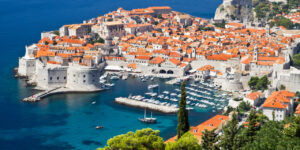
According to the Arvio report for the first quarter of 2025, 7.19% of all real estate transactions in Croatia were concluded by foreigners. The most active among them are:
· Slovenia — about 30.2% of transactions with foreigners
· Germany — approximately 21.1%
· Austria — about 10.4%
Buyers from Ukraine did not make it into the top 10 list of the most active real estate buyers in Croatia, but there are dozens of transactions involving Ukrainians purchasing real estate in Croatia.
At the same time, Ukrainian buyers are quite noticeable in the Balkans as a whole — in Montenegro, they ranked 11th among foreign real estate buyers, and in Bulgaria, they are consistently among the top 10 most active investors.
In recent years, the number of deals concluded by foreigners in Croatia has been declining:
· 2022 — ~ 13,344 deals
· 2023 — ~ 12,278
· 2024 — ~ 11,623 deals
Foreign buyers are particularly active in coastal regions such as Istria and Kvarner, as well as in areas popular for vacation and secondary housing. New apartments and houses that require minimal renovation or are immediately ready for occupancy or rental are in particularly high demand.
Real estate prices in some regions of Croatia are showing steady growth — about 10% per year. In coastal and tourist areas, average prices for new projects and apartments are significantly higher than the market average.
Given current trends, it is predicted that the share of foreign buyers in the total volume of transactions by the end of 2025 will remain within 8%, possibly declining slightly due to rising prices and housing affordability issues. Prices on the coast are expected to grow faster than average, driven by supply shortages, high tourist demand, and a focus on new properties.
There is also likely to be increased demand from Europeans in neighboring countries (Slovenia, Austria, Germany) and “returning diaspora.” As for purchases from countries outside the EU, the situation is less clear, and no significant flows have yet been recorded in public sources.
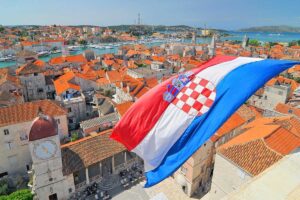
Croatia is a popular country for investing in real estate on the Adriatic coast. However, before buying an apartment or a house, you should consider not only the cost of the property itself, but also purchase taxes, registration fees, and annual maintenance.
Real estate purchase tax
Rate: 3% of the appraised value determined by the local tax authority.
Who pays: the buyer.
When it is paid: within 30 days after receiving the tax notice.
If the purchase is made from a construction company (new construction with VAT), the tax is not paid, and instead, the price includes 25% VAT.
Example: Buying a second-hand apartment for €200,000 → tax = €6,000.
Registration costs
Notary: €200-800 depending on the complexity of the transaction.
Lawyer (optional): 0.5-1.5 % of the property value.
Registration in the land cadastre (Ured za katastar): €40-60.
Translation of documents (if non-resident): €50-150.
Annual real estate tax (from 2025)
Starting from January 1, 2025, a new tax on residential real estate is in force in Croatia, replacing the “resort tax”.
Who has to pay?
Owners of second properties, vacant housing, or properties that are rented out for short-term (less than 10 months).
Does not apply to housing that:
is the primary place of residence;
is rented out for a long-term lease (10+ months per year);
is used for agricultural purposes, or is recognized as unfit for human habitation.
The rate is determined by the municipality:
from €0.60 to €8/m² per year.
In the absence of a decision, the minimum rate of €0.60/m² is automatically applied.
Example: 70 m² apartment in Split → €2/m² → €140/year
Utility costs
Utility fee (kommunalna naknada):
~ €0.3-0.6/m²/month;
Depends on the city, district, type of facility.
Garbage collection fee:
€10-25/month.
Water + sewerage:
€1,5-2,5/м³.
Electricity:
The average bill for an apartment is €40-60/month (in the off-season).
Internet, TV:
€25-35/month.
Tax on rental income
If the property is rented out:
Fixed tax + tourist tax (~€300-500/year).
Additionally: annual registration of the property as a tourist facility (categorization).
It may be necessary to register as an individual entrepreneur (mandatory for incomes above €40,000/year).
Capital gains tax (on sale)
If you sell the property less than 2 years after purchase → 10% tax on the profit.
After 2 years – tax exemption (provided that it is not a commercial activity).
Real estate in Croatia remains attractive to investors and buyers from the EU, Ukraine and other countries. But since 2025, maintenance has become more expensive due to a new annual tax. When buying, it is worth considering both the initial costs (up to 4-5% in addition to the price) and the annual costs (from €500+ depending on the area and use).
Source: http://relocation.com.ua/podatki-na-neruhomist-u-horvatiyi-u-2025-rotsi-analiz-vid-relocation/
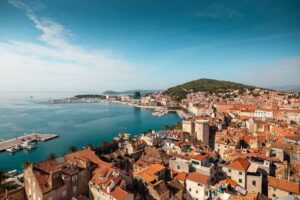
The mortgage market in Croatia is showing stable activity thanks to government programs, favorable conditions offered by banks, and steady demand from both citizens and foreigners.
Since 2017, the SSK (Subvencioniranje stambenih kredita) mortgage subsidy has been in effect, whereby the state compensates up to 50% of the monthly annuity for the first five years on loans of up to €100,000 issued to first-time residents. Pilot assessments show that these measures have led to an increase in housing prices, especially in large cities.
Terms and conditions of mortgage programs at banks
HPB (Hrvatska poštanska banka):
Fixed rate from 2.89%, APR (effective) — 3.00%, term up to 30 years. No property appraisal costs.
OTP banka:
Rate 4.69%, APR 4.93%, term up to 20 years, amount up to €200,000.
Agram Banka:
For new customers, the APR is 5.49% for a 20-year loan (example — €50,000).
Podravska banka:
Fixed rate of 5.90%, APR — 6.15%, no issuance fee.
Conditions for foreigners
Citizens of the EU, Switzerland, Iceland, Norway, and Liechtenstein can obtain a mortgage on the same terms as Croatians. For non-residents, LTV is 50–70%, with state control over the project; a residence permit or long-term stay may be required.
History of rates: from 2017 to 2025
2017–2019: rates were fixed below 3%, especially in HPB, thanks to subsidies and other benefits.
2020–2022: rates rose gradually in line with Eurobonds and monetary easing, reaching 4–5%.
2023–2025: current rates are fixed at 2.9–5.9%, ECA — 3–6%, reflecting tight credit conditions.
The Croatian mortgage market combines state support (SSK), a wide range of offers from banks, and accessibility for foreign buyers, especially from the EU. As a result, potential borrowers can expect rates ranging from 2.9% to 6%, fixed for the entire term of the loan, which is 20 to 30 years.
Source: http://relocation.com.ua/mortgages-in-croatia-overview-of-conditions-and-trends/